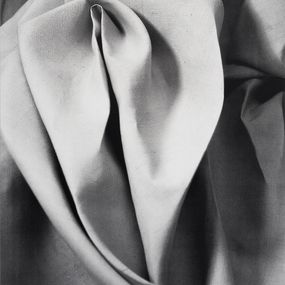
Presentation
Born on May 30, 1947 in Saint-Étienne, France, ORLAN is a French visual artist who lives and works between Paris, New York and Los Angeles. The iconoclastic feminist artist has deliberately chosen to write her pseudonym in capital letters: ORLAN.
This multi-faceted artist expresses herself through a variety of media: painting, sculpture, installations, performance, photography, digital art and even plastic surgery and biotechnology. Today, she is one of the best-known French artists in the field of body art, both in France and abroad. Her work, which uses provocation to reject society's codes, is a means of expressing her personal commitment.
Since the 1960s, ORLAN has been questioning the status of the body, particularly the female body, and the political, religious and social pressures that constrain and subjugate it. Her work denounces all forms of violence applied to the body. Faithful to her feminist commitment, she makes her own body a tool of combat and the privileged instrument of her work. In 1978, she founded the Symposium international de la performance in Lyon, which she ran until 1982. Her "Carnal Art Manifesto" was followed by a series of surgical operations, to be analyzed as performances, carried out by the artist between 1990 and 1993. With this series, the artist's body becomes a site of public debate. These surgical operations were widely publicized and provoked considerable controversy, even though they represent only a small part of the artist's complete body of work.
ORLAN's work on the body also involves photography, reminiscent of Cindy Sherman. This is the case, for example, in her installation "Le Baiser de l'Artiste", exhibited at FIAC in Paris in 1976. In this work combining sculpture, photography and performance, the artist plays with the contradictions between the two usual faces of women, the Virgin Mary and the sinful Mary Magdalene. She herself is present in this installation, offering visitors the chance to pay 5 francs to receive a kiss from the artist. A daring installation that symbolizes her rejection of social conventions and the traditional representation of female roles, which she refuses to accept. This iconic work was selected by the Centre Pompidou for inclusion in its book "100 Masterpieces of the 20th Century".
Photography also inspired ORLAN to create a series of digital photomontages between the late 1990s and early 2000s, known as "Self-Hybridations". In these portraits, she incorporates features from different cultures into her own face, transforming herself into a Mayan Indian, for example, using retouching software.
ORLAN also explores the use of new technologies in the arts. In 1982, with Frédéric Develay, she created the first online contemporary art magazine, Art-Accès-Revue, on Minitel.
ORLAN then attempted to further expand the frontiers of contemporary art, using biotechnologies to create an installation entitled "Manteau d'Arlequin" (Harlequin's Coat), made from the artist's own cells and cells of human and animal origin.
At the same time, ORLAN teaches at the École nationale supérieure d'arts de Cergy-Pontoise. In 2005, she was awarded a one-year residency at the ISCP in New York by the Association française d'action artistique (AFAA), and in 2006 she was invited to Los Angeles for a residency at the Getty Research Institute, the Getty Center's research laboratory.
In June 2013, she filed a complaint against Lady Gaga for plagiarism. According to ORLAN, the American star draws too freely on her "hybridizations" in the album Born This Way, released in 2011. The start of the video for the song of the same name shows Lady Gaga wearing makeup and decapitated, which resembles her 1996 work "Femme avec tête exécutée" ("Woman with Executed Head"). The artist demanded $31.7 million in compensation from Lady Gaga, but the courts ultimately ruled in the American singer's favor.
Throughout her career, the artist has received numerous awards, including the Grand Prix de l'e-Réputation in 2013, in the visual arts category, which rewards the most popular personalities on the Internet, alongside Philippe Starck and Yann Arthus-Bertrand. In 2017, she was awarded the Grand Prix International de l'Excellence Féminine by the Ministry of International Affairs in Genoa, Italy, in 2018 the Hundred Heroines de la Photographie award by the Royal Photographic Society at Paris Photo and in 2019 the special Woman of the Year award by the Prince of Monte-Carlo (Monaco). Finally in 2020, ORLAN was named President of Hundred Heroines in London.
ORLAN has been the subject of numerous group and solo exhibitions in France and abroad. Famous institutions that have hosted her work include Le Centre Pompidou and La Maison Européenne de la Photographie in Paris, The LACMA County Museum of Art and The Getty Museum in the United States, and The National Museum of Art in Japan.
Discover our selections of works by artists
What are their 3 main works?
What is Orlan’s artistic movement?
When was Orlan born?




